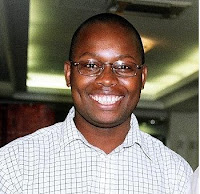Water is Life: Can Boreholes Sustain Life?

I once worked for a multi-million dollar donor project in which borehole drilling was one of the major components of the project portfolio. This project was and probably continues to be a key player in the water sector in Malawi. In 2001 we were seriously considering the sustainability questions of boreholes as a strategy for provision of potable water to Malawian communities. Apart from problems of maintenance, it was a general view of the organization that, we needed to be careful in terms of how many new boreholes we were going to continue drilling for water provision in communities. One key point was clear, in a lot of areas boreholes have to be sunk more than 40 metres into the ground for them to provide water. This in many areas of Malawi entails drilling into the aquifer, which is the ground rock layer that holds water.
Perhaps an understanding of the aquifer will be appropriate here. “...When a water-bearing rock readily transmits water to wells and springs, it is called an aquifer. Wells can be drilled into the aquifers and water can be pumped out. Precipitation eventually adds water (recharge) into the porous rock of the aquifer. The rate of recharge is not the same for all aquifers, though, and that must be considered when pumping water from a well. Pumping too much water too fast draws down the water in the aquifer and eventually causes a well to yield less and less water and even run dry. In fact, pumping your well too fast can even cause your neighbor's well to run dry if you both are pumping from the same aquifer" (http://ga.water.usgs.gov/edu/earthgwaquifer.html).
According to Wikipedia, "Aquifer depletion is a global problem, and is especially critical in northern Africa; see the Great Manmade River project of Libya for an example".
In recent times, concern has been raised on the sustainability of boreholes. People have begun questioning the wisdom of continued drilling of new boreholes without careful consideration of the impact on the aquifer, which could have long-term negative environmental consequences, such as the depletion of the aquifer and resultant negative environmental effects. The level of recharge of the aquifer is slow in many areas in Malawi owing in part to low rainfall. As such, if the aquifer is depleted in a particular area it can lead to the drying up of rivers. It is however true that the demand for boreholes as a source of potable water is very high in Malawi – there is a common saying that “water is life”. In part, this high demand is due to the fact that of all the available strategies, boreholes constitute the easiest project to request from donor agencies and Government. In addition, boreholes produce quick tangible results – potable water. If you are a politician in Malawi, boreholes are perhaps the easiest vote-winning development projects – “umangoti mukuona zitsime ndabweretsa” (do you see how many boreholes I have brought in this community), and clearly water is life - people will give you votes. But the tendency is to oversupply boreholes in particular communities, and most, if not all these boreholes are breaking into the aquifer. The potential consequence is what I have alluded to above.
The following alternatives sources of water are proposed to avoid potential negative environmental effects of boreholes: First, in many places in Malawi boreholes already exist, and all that is required is their rehabilitation. A borehole rehabilitation programme can minimise the sinking of new boreholes, thereby not only contributing to efficient use of available resources but also reducing the overexploitation of the aquifer. Secondly, there is need to harness surface water through a) construction of dams, which can then supply water to communities; b) rain water harvesting. These two sources do not have any potentially negative effects on the aquifer, in fact they help to recharge it.
In conclusion, boreholes should be considered as a short-term solution for provision of potable water while surface water should be harnessed for as a long-term and sustainable strategy.
Kennedy Lweya, PhD


